
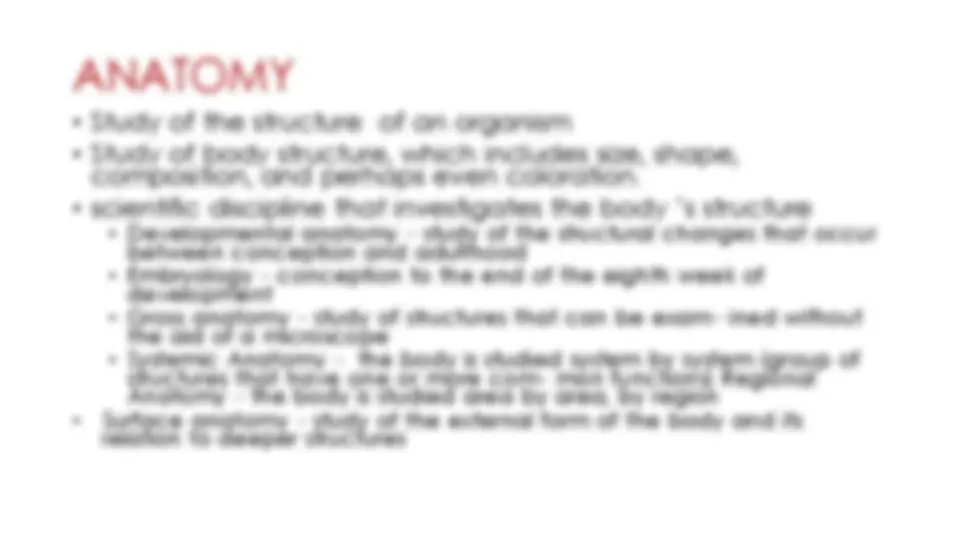
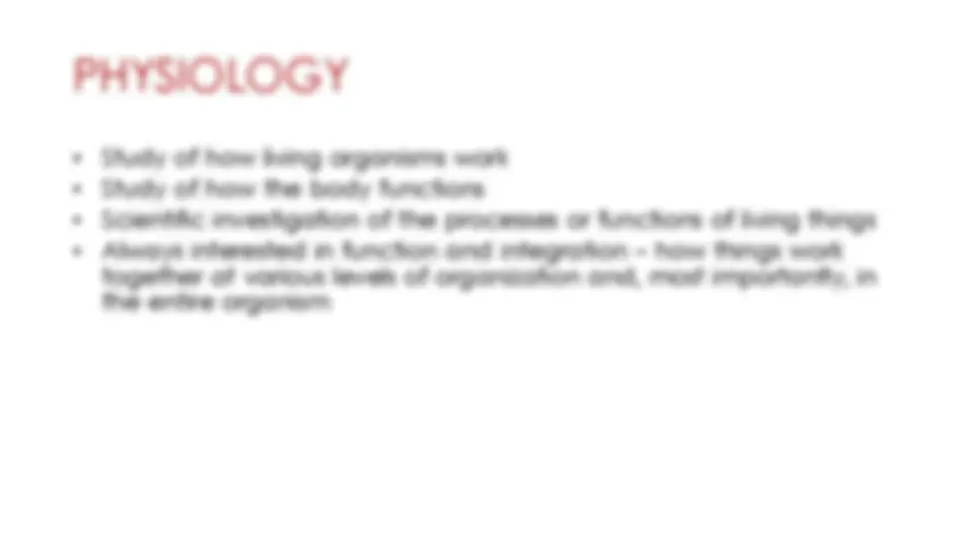
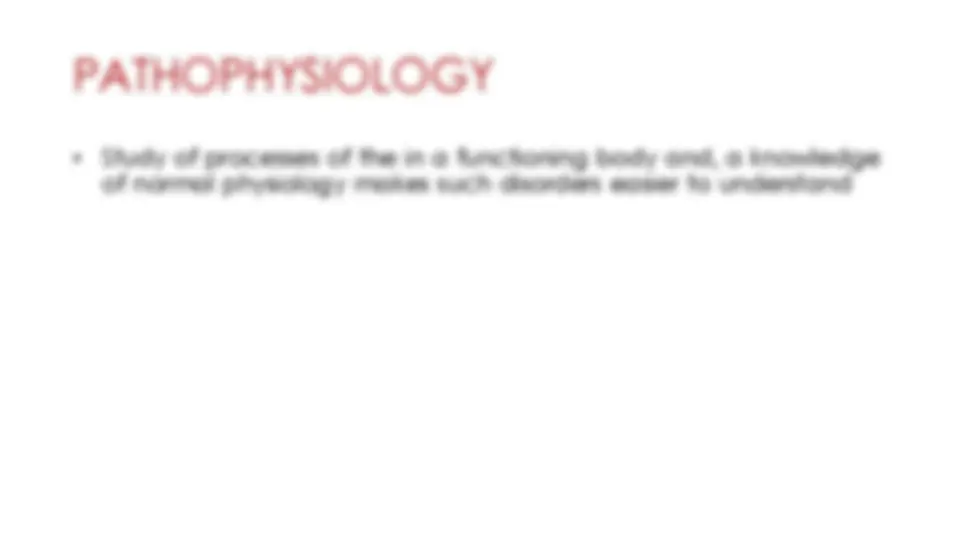
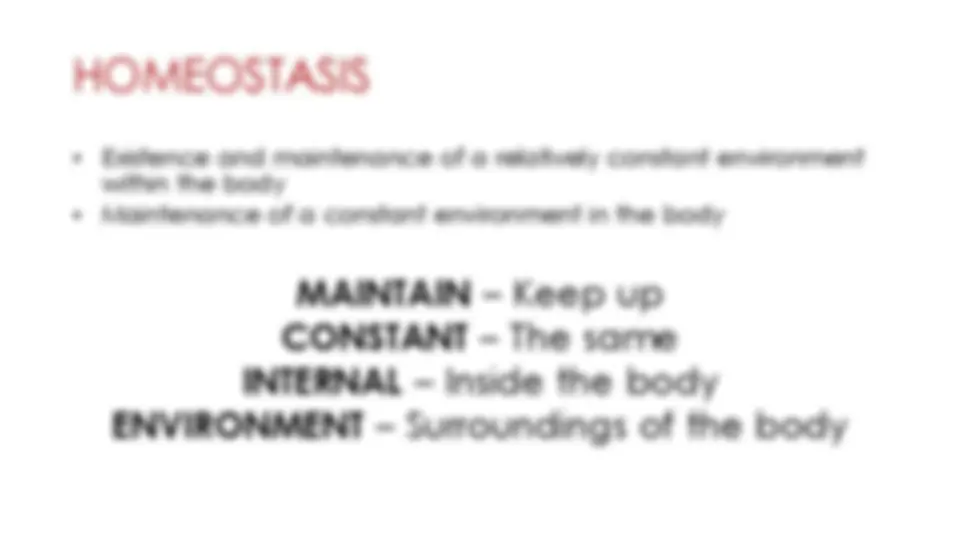
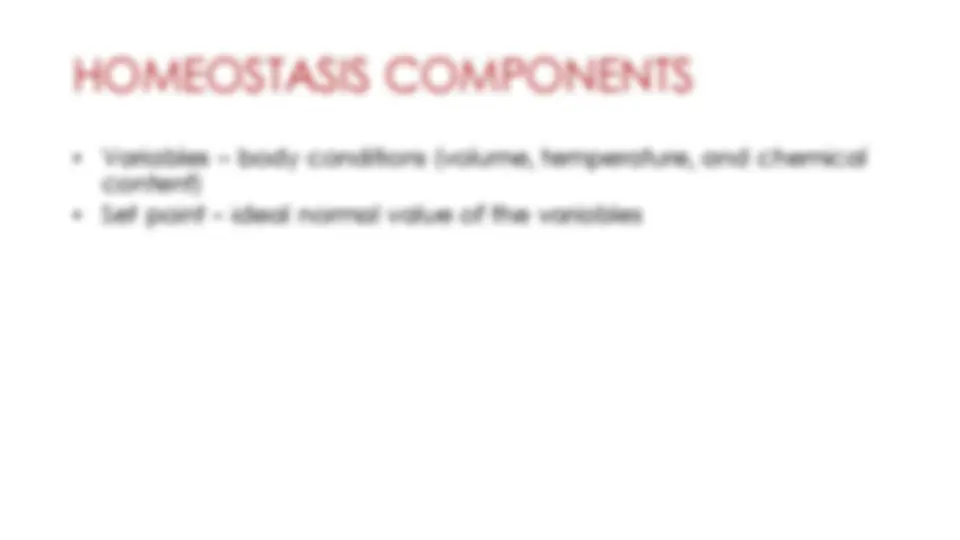
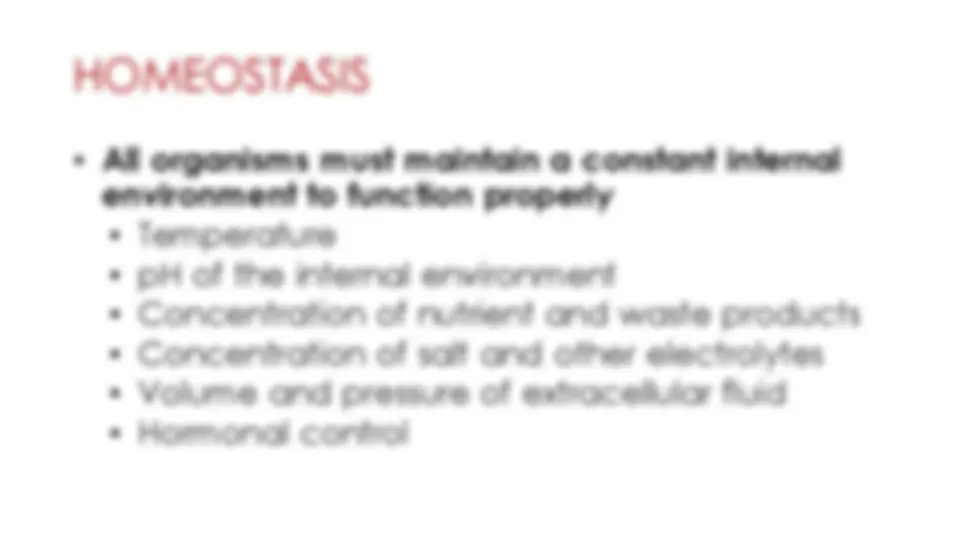

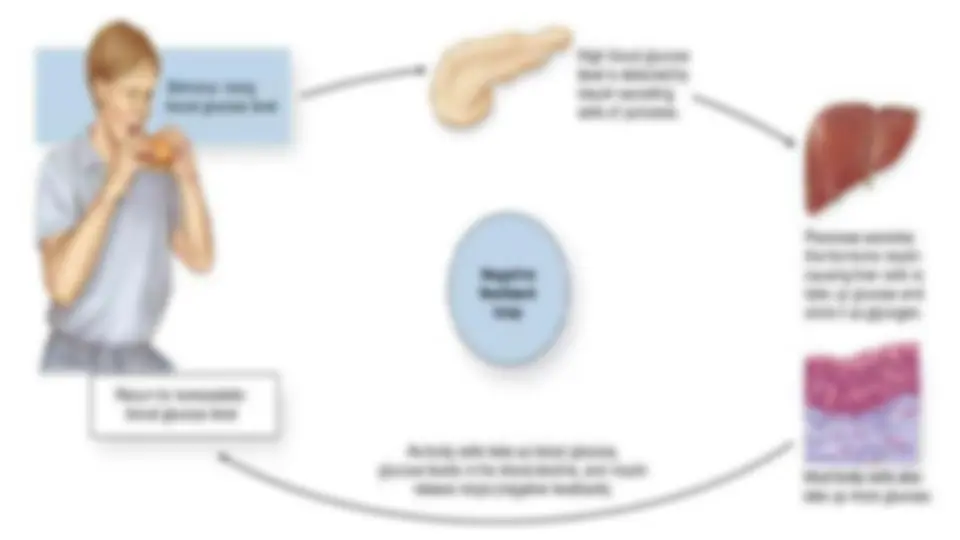






Study with the several resources on Docsity

Earn points by helping other students or get them with a premium plan


Prepare for your exams
Study with the several resources on Docsity

Earn points to download
Earn points by helping other students or get them with a premium plan
Community
Ask the community for help and clear up your study doubts
Discover the best universities in your country according to Docsity users
Free resources
Download our free guides on studying techniques, anxiety management strategies, and thesis advice from Docsity tutors
The document talks about the definition of anatomy, physiology, pathophysiology, and other subdivisions. It also states and demonstrates the level of organization, characteristics of the Living Human Organism, Homeostasis, Feedback Systems, and Basic Mechanism of Disease.
Typology: Lecture notes
1 / 20

This page cannot be seen from the preview
Don't miss anything!













Jhia Anjela D. Rivera1, 1 BS Biology Graduate, Department of Biology, College of Science, Polytechnic University of the Philippines (^2) MS Biology Student, Graduate School, Centro Escolar University
thexgene.weebly.com